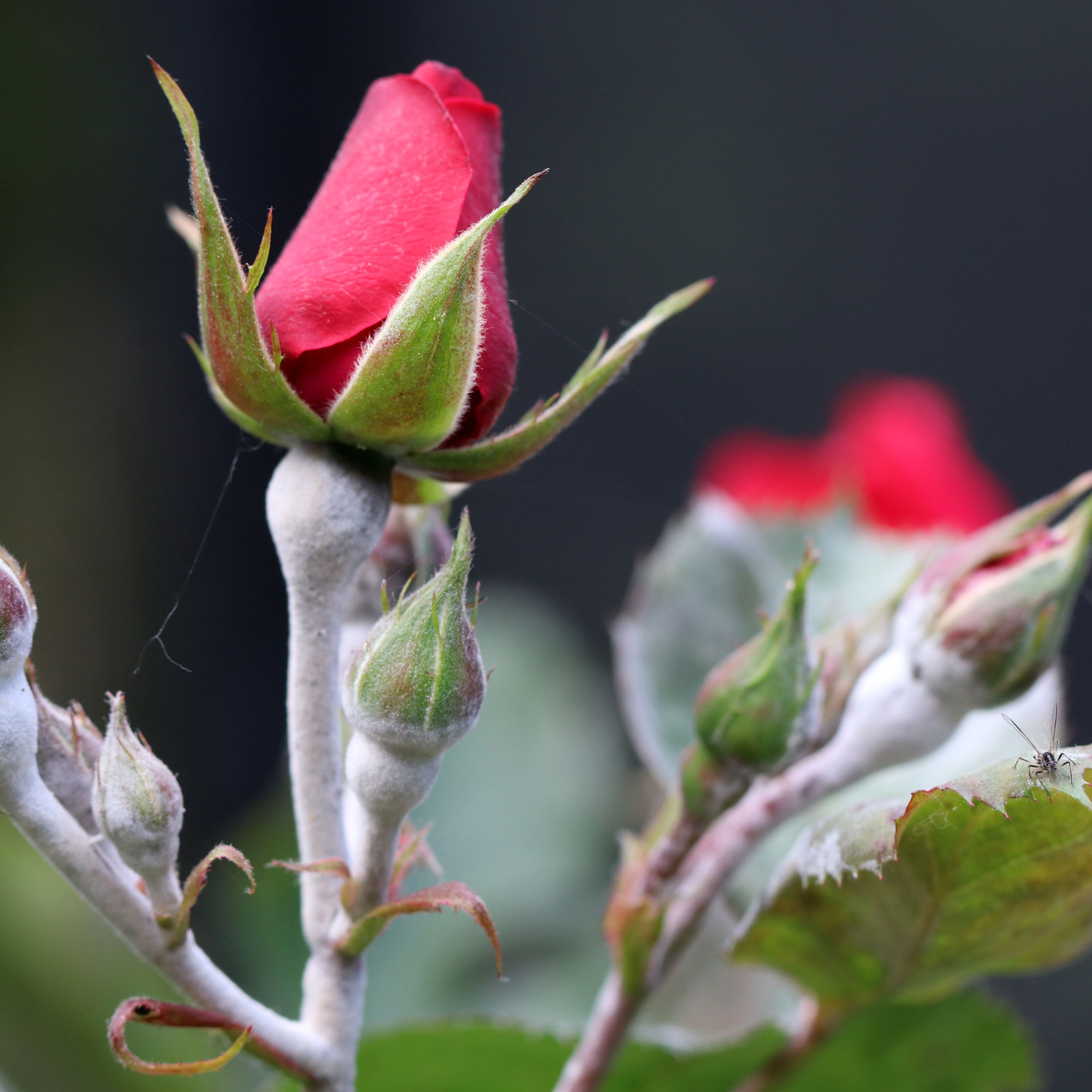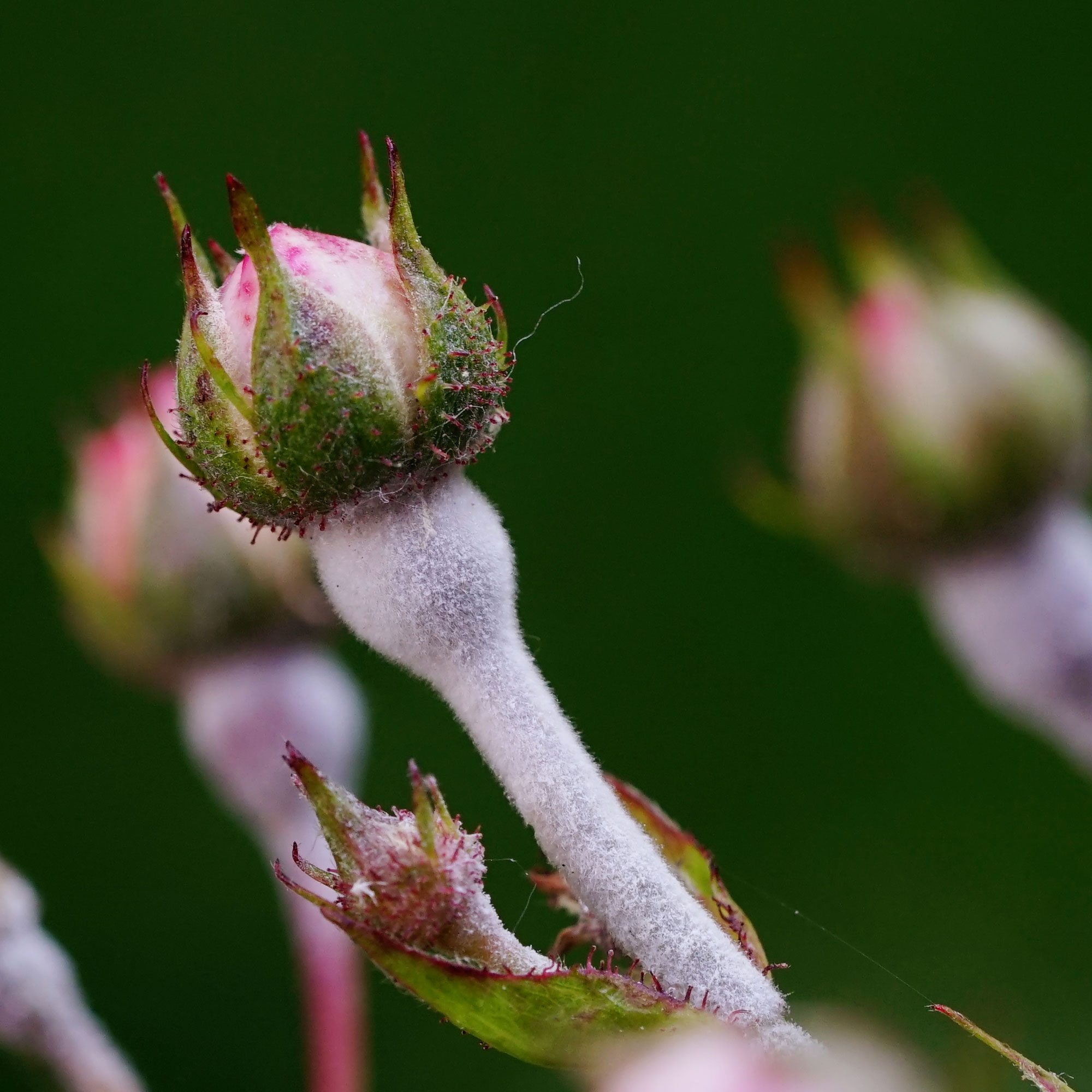
Tending to a garden can be relaxing. More often than not, however, having a garden and growing plants involves a lot of stress, a lot of problem-solving, and a lot of frantic Googling. But if you’re wondering why you have powdery mildew on your plants, you’ve come to the right place.
In the UK, many garden ideas are ruined by common garden pests (we feel like we spend our whole lives trying to get rid of slugs), ever-changing weather, and diseases that threaten the health and well-being of our plants. And while there are many common rose problems and diseases, powdery mildew can affect roses… and just about every other plant in your garden too.
That’s why we’ve consulted with garden experts to get the lowdown on powdery mildew on plants. Below, you’ll find everything you need to know about what causes powdery mildew, what it looks like, and how you can get rid of it once and for all.
What is powdery mildew?
Powdery mildew is a fungal disease that can affect almost every plant in your garden - from your fruits and vegetables to your ornamentals, your rhododendrons and even your wisteria. The fungus typically attacks the leaves and stems of the plant, resulting in a visible white powder.
John Clifford, gardening expert at Gardenstone, also adds, ‘Sometimes it might look like a thick coating of dust, or very thin cotton wool.’
However, what makes powdery mildew so difficult to control is that it’s not one single fungus. Different species of fungi can result in powdery mildew - meaning one type of fungus can affect your roses, and another can affect your cucumbers simultaneously.
But what causes powdery mildew? Well, experts agree that powdery mildew is normally the result of warm, wet weather and poor air circulation around the plant.
And while a visible white powdery substance is a sure sign that your plants have been infected, there are many other signs of powdery mildew to look out for. These include:

- Discoloured leaves.
- Curled or distorted leaves.
- Stunted growth.
- Poor fruiting or flowering.
- Lack of vibrancy.
- Bitter crops.
Thankfully, plants infected with powdery mildew will rarely die as a result of the fungus - but it can still affect the health and growth of your plants. In fact, the fungus can drastically weaken your plant, making it more susceptible to other diseases that could prove fatal.
Because of this, it’s best to treat powdery mildew as soon as you spot any of the signs above.

How to get rid of powdery mildew
There are many ways to get rid of powdery mildew and prevent its return. While chemical fungicides could be used, we always suggest using natural methods that won’t harm the wider environment.
1. Remove infected areas
In an ideal world, you should remove the whole infected plant to prevent the spread of powdery mildew. But we know that this isn’t always possible (or desirable), which is why you should first focus on removing the affected areas of the plant.
Make sure you clean your garden tools before doing this, and use pruning shears or secateurs to snip off the leaves or stems that have visible signs of powdery mildew.
Then, dump them in your general waste bin to dispose of them properly. Avoid putting the infected pieces on your compost heap, as this could aid the spread of the disease.
The sharp blades on these pruners are perfect for snipping off the infected leaves on your plant and even come with a locking catch, making them safer to store when you're not using them.
2. Make a natural fungicide
Fungicides are the most effective way to get rid of fungal diseases in plants, and thankfully, fungicides come in so many different shapes and sizes. This means that you can swap harsh chemicals for more natural alternatives.
You can often make your own fungicide using products you already have at home. Morris Hankinson, director of Hopes Grove Nurseries, says, ‘You can use baking soda. This is more of a preventative treatment to avoid it in the first place, but baking soda can help get rid of powdery mildew. Mixed with water and liquid soap, it can be sprayed onto the plants easily and quickly.’
He adds, ‘As strange as it may sound, milk has also been known to get rid of powdery mildew. Acting as both a fungicide and antiseptic, diluting milk with water (40% milk and 60% water) and pouring on the plant should do the trick.’
These aren’t the only options, though. John also suggests using neem oil for plants. He says, ‘Neem oil has antifungal properties and can help prevent and control powdery mildew. Once you've pruned affected areas, it's a good idea to use neem oil to protect the rest of the plant and the plants around the infected area from the disease.’
‘To do this, mix two tablespoons of neem oil with water. Spray the solution on affected plants, covering all surfaces. Repeat this every week.’
This bottle contains 100% neem oil, which can be warmed up and then be mixed with water and sprayed on your plants as a natural fungicide.
3. Prevent future infection
It’s all well and good getting rid of powdery mildew, but if you want to ensure that it doesn’t return, there are certain measures you should take:
Improve air circulation: To prevent powdery mildew, give your plants room to breathe. This could mean moving them to a different area of the garden or pruning them to improve air circulation. Just make sure they have enough sunlight and that you don’t place them near walls or sheds, where the air will often be stagnant.
Water at the base: As powdery mildew thrives in wet and warm environments, you should aim to keep your plants as dry as possible - while also ensuring you don’t make any garden watering mistakes. John says, ‘If you water at the base, then the foliage doesn't need to get unnecessarily wet. You should also water in the morning so that the water can evaporate.’
Mulch your plants: Although you want your plants to be well-watered, you also need to be careful that you water only the roots. Adding a layer of mulch around your plants can help retain moisture in the soil and keep the roots wet. Plus, it can offer a slow and steady release of nutrients to boost the plant back up.
Avoid fertilising: Although natural plant fertilisers offer the perfect opportunity to boost the growth of your plants, you should avoid fertilising any plants previously affected by powdery mildew. That’s because this fungus thrives on healthy, new growth and can increase the spread of the disease. Just let it grow on its own terms for a while.
This mulch can be used to maintain the plant's moisture without over-saturating the leaves. Simply add a layer around your plants and reap the benefits of mulching.
FAQs
Can a plant with powdery mildew be saved?
Yes, plants infected with powdery mildew can be saved - but your chances of saving the plant will be higher if you catch it early. That’s because powdery mildew can severely weaken a plant, making it more susceptible to other diseases that could prove fatal.
The best way to save a plant with powdery mildew is to cut away the affected areas and then treat the powdery mildew. Try to do this with a natural fungicide rather than chemicals, as this will keep the rest of your garden happy and healthy.
When treating plants with powdery mildew, it’s also a good idea to keep them away from other plants in your garden to prevent the spread.
Can I just wash off powdery mildew?
You can simply wash off powdery mildew as long as you also treat the plant and prevent it from spreading at the same time. If the plant is infected, simply washing off the white powder on the leaves or stems won’t solve the issue.
Instead, you need to use a natural fungicide and cut off any affected areas of the plant. You should then look into moving the plant, improving air circulation, and watering from the base to stop it from getting worse.
So, if you have powdery mildew on your plants, you don’t need to worry. You can fix it.







